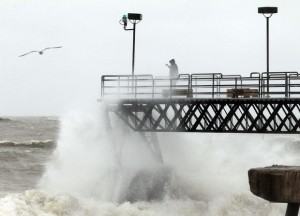
With the weather, rainfall and flooding in the news, we thought it an appropriate time to discuss the Environment Work Stream findings. Are environmental conditions in Northeast Ohio getting better or worse? The answer to that question depends a lot on the type of environmental issue being considered. Here is a bit of a summary for rainy day reading.
Since the 1970s, the region has made a lot of progress cleaning up what is typically thought of as “pollution.” Industry has reduced emissions from smokestacks and effluent pipes. Wastewater treatment plants are doing a much better job treating sewage. And some of dirtiest sources of industrial pollution have closed down or moved to places with lower environmental standards. As a result, the air and water are cleaner than they used to be.
But other types of environmental issues have been harder to address. These are “nonpoint” sources of pollution — sources that are numerous and dispersed rather than a single point that is simple to regulate and control. For example, the region’s lakes and streams are impacted by polluted stormwater runoff, which flows off countless streets, parking lots, and farm fields. Similarly, the big problem affecting the region’s air quality now is the motor vehicle pollution from more than two million cars and trucks.

These nonpoint sources are a big reason why the region struggles to make further environmental progress. Most Northeast Ohio counties still fail to meet federal air quality standards for ozone and fine particulates. Flooding from stormwater runoff is a persistent and costly problem. And there are disturbing signs that the health of Lake Erie, which had been improving for several decades, may be deteriorating again (lack of data further frustrates understanding of potential trends).
It is important to note that these environmental problems are related to patterns of land use. As development has spread out over more land, there are more paved surfaces and rooftops to shed rain, and people have to drive farther to reach far-flung destinations. The spread of development also affects the diversity of plants and wildlife. And it impacts emerging environmental issues, such as the rising level of carbon emissions that impact the region’s future precipitation patterns and conditions for agricultural production.
Visit our Conditions and Trends Platform to Learn More!
What Can I Do Today?
